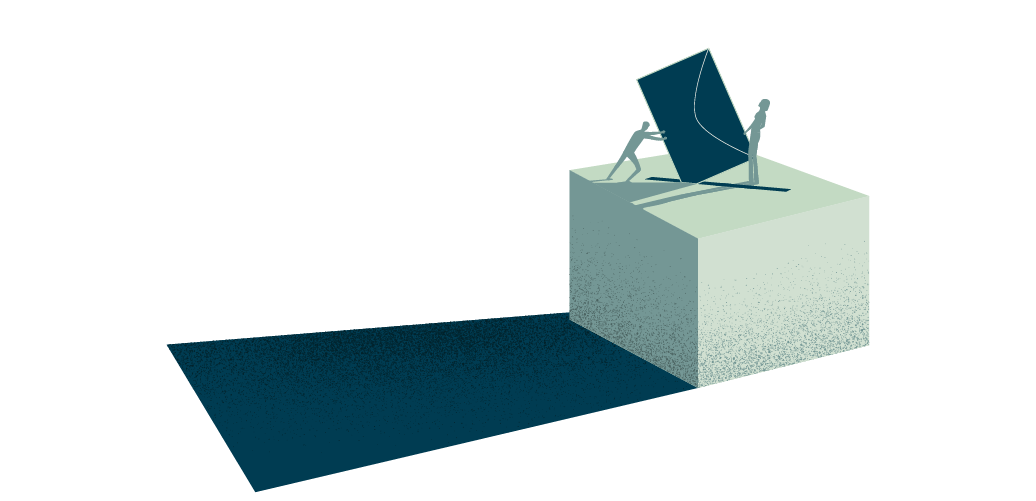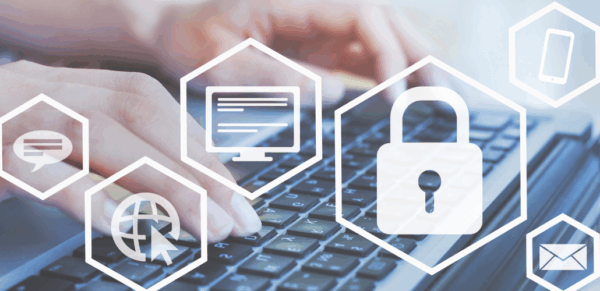Q2 2025 Market Outlook: Bernstein’s ‘Candide’ or REM’s ‘End of the World’? We’re Sticking with Resilience

By Liz Levy, CFA, Managing Director of Investment Research
The S&P 500 ended the second quarter at a new all-time high, so is it really the “Best of All Possible Worlds”? Then again, as of early July, we still have no idea what the tariff environment will look like in the coming weeks and months, so is this the “End of the World as We Know It”? Suffice it to say that this uncertainty has left me feeling, well, not fine. I am reasonably sure most readers will get at least one of my musical references regarding our analysis of what is going on right now in markets and beyond (bonus points to anyone who gets the meta-reference*).
In last quarter’s Market Outlook, we noted that uncertainty about tariff policy—predominantly, but not exclusively—drove markets down for the first quarter of the year. The second quarter was an even wilder ride. It opened with Trump’s “Liberation Day” extreme tariff proposals, which sent the S&P plunging into official bear market territory. But as Trump backed off the most extreme tariffs, and investors realized that Trump Always Chickens Out (the so-called “TACO-trade,” which became a shorthand for ignoring any of Trump’s tariff bluster), the equity market was off to the races again; the S&P 500 finished the quarter up an astounding 10.6%.
Below that headline number was the return of the tech growth trade. With renewed optimism about the AI revolution, the top two performing sectors were Information Technology (+23.5%) and Communications Services (+18.2%), which includes Meta and Alphabet, formerly known as Facebook and Google. Stocks of larger companies strongly outperformed smaller ones, and high growth rates were seen as more important than the prices paid for that growth. In short, it was a return to the way the stock market has been acting for the past few years.
Other asset classes had an eventful quarter as well. The benchmark 10-year Treasury note yield fell to just above 4% in early April during the tariff chaos, as investors sought safety in a falling equity market. It then climbed to nearly 4.6% before rolling over and declining back to 4.2%, ending the quarter almost exactly where it began. Crude oil similarly rode a roller coaster during the quarter, ranging from $59 to $73 and ending near $65, as geopolitical tensions in the Middle East burst into full-blown warfare between Israel and Iran before settling into an uneasy U.S.-enforced ceasefire. The dollar also continued to weaken, falling 7.5% against the Euro during the quarter.
How is it that the stock market has literally never been better, while the currency markets appear to be portending the end of the U.S. dollar as the global reserve currency, and the bond market is clearly skittish due to inflation and budget deficit concerns? The various financial markets are sending conflicting signals. And all this just six weeks after Moody’s downgraded the U.S. credit rating, in anticipation of the passage of a budget bill designed to create massive tax breaks for wealthy Americans—paid for by stripping health insurance and food assistance from the poorest Americans, while blowing out the budget deficit and national debt? And just two weeks after the U.S. launched airstrikes in Iran as an escalation of Israel’s conflict?
Preparing for Uncertainty
I could write a narrative about how the equity market is right; economic data from a variety of sources is showing that the economy remains solid, everything is fine, and stocks will keep going up. I could also write one about how the currency market is the correct indicator, and the value of the dollar will continue to fall as investors flee the U.S. Or, one where the tariffs raise inflation and the Fed does not lower rates twice this year, as currently expected, and stagflation follows. In short—I don’t know how things will play out, and neither does anyone else.
That might not seem like the most reassuring admission from your investment adviser. However, that uncertainty is driving the investment decisions we are making in portfolios. Over the past, very eventful year that Kofi and I have had the privilege of overseeing Clean Yield’s equity portfolio strategy and working with Eric on asset allocation, we have let this sense of uncertainty, and the humility of admitting we don’t know what is coming next, guide us in shaping portfolios that we believe will thrive no matter the macroeconomic or geopolitical crosswinds that may come at us.
One of the manifestations of this uncertainty is our continued focus on investing in quality companies.
While quality is, to a certain extent, in the eye of the investor, our definition of quality focuses on resilience. To us, this means companies that use their balance sheets responsibly; have a capital structure and allocation policy appropriate for their cash flow generation; and have robust business models that can continue to generate growth.
We also remain mindful of our risk budget, meaning that we are conscious of the various dimensions of risk inherent in investments we choose. For example, investing in a smaller-sized company, an international company, or a highly valued but fast-growing company may all be sound investment decisions, but they may all introduce risks to portfolios relative to the broader U.S. stock market. We use a benchmark, the S&P 1500 index in our case, to help us understand these risks and their magnitudes, and when they are worth taking.
Kofi and I are using these tools and concepts to help us evolve Clean Yield’s practices and to help us better weather both up and down markets. One silver lining of the market turmoil over the past year is that we have experienced both sets of conditions in a short amount of time. So far this year, our approach to navigating these choppy markets has generally performed the way we wanted it to—providing some protection relative to the broader markets during times of economic stress while still participating in up markets. While we can’t predict what is coming next, we feel prepared for this uncertainty and the volatility it brings.
One thing that will not change, of course, is our connection to and rootedness in our values. Our commitment to advancing equity, justice, and sustainability remains baked into all the investment decisions we make. Our purpose always is to maximize the positive impact of our clients’ financial assets while meeting their financial goals, through proxy voting, shareholder advocacy, and impact investing. In these chaotic and scary times, I continue to be proud of the work we are doing on your behalf.
*One of the lines in the REM song “It’s the End of the World as We Know It (And I Feel Fine),” is “Leonard Bernstein!,” the composer of the operetta “Candide,” based on Voltaire’s satire of the philosophical optimism of the day.
More News & Insights
Get to Know Clean Yield Impact Investing Associate Monica Charletta
Monica Charletta brings a background in impact-first regenerative food systems investing and ESG strategy consulting to the team.
Read More >Fraud Prevention Strategies: What It Is and How to Protect Yourself
Clean Yield hosted a webinar, “Fraud Prevention Strategies: What It Is and How to Protect Yourself.” This summary includes resources to help you prevent fraud.
Read More >Supporting Local News and Democracy
Clean Yield is proud to announce it will provide an annual donation to support the American Journalism Project for the next three years to further AJP’s investments in local journalism to support preserving our democracy, increasing civic engagement, and depolarizing communities.
Read More >

